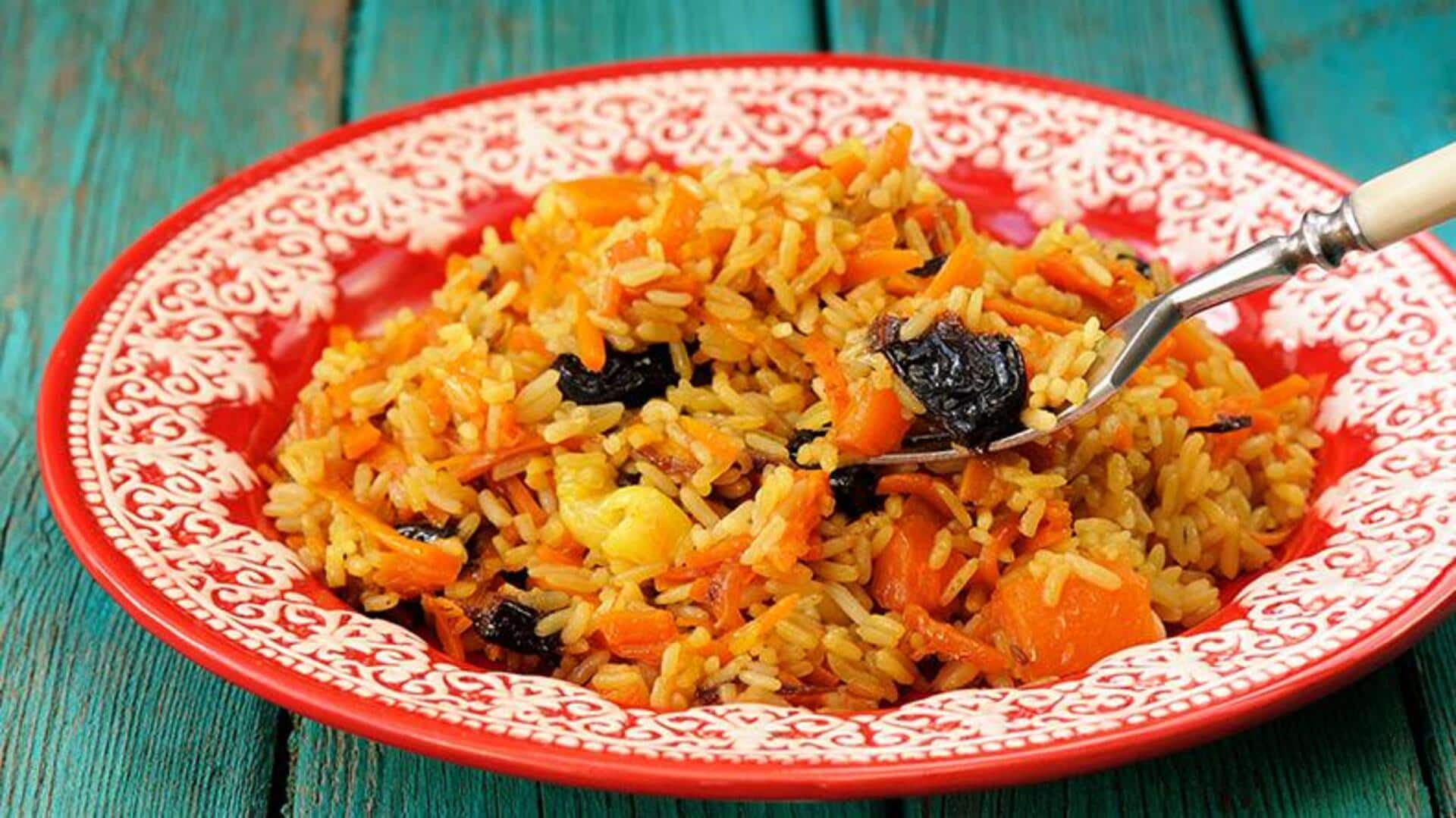
Recipe: Try this Uzbek vegetable pilaf
What's the story
Uzbek vegetable pilaf, a vibrant and aromatic dish, is deeply rooted in the culinary traditions of Central Asia. This vegetarian and eggless version enriches the classic recipe with rich flavors and nutritious ingredients. It transcends a mere meal, offering an exploration of culture and tradition through its taste. Ready your palate for this ultimate journey into preparing Uzbek vegetable pilaf.
Ingredients list
Gather the following ingredients
For this dish, gather one cup of basmati rice, two julienned carrots, a thinly sliced large onion, strips of one red bell pepper, half a cup of overnight-soaked chickpeas, four minced garlic cloves, half a teaspoon each of cumin and coriander seeds, one teaspoon turmeric powder, salt to taste, three tablespoons oil, and two cups water or broth.
Step 1
Preparing the vegetables
Start by heating two tablespoons of oil in a deep pan or pot over medium heat. Add the cumin and coriander seeds until they start to pop. Then add the sliced onions and cook until they turn golden brown. This process should take about five to seven minutes. Next, add the minced garlic and saute for another minute until fragrant.
Step 2
Cooking rice with spices
Stir in the turmeric powder followed by julienned carrots and red bell pepper strips into the pan. Saute for about three minutes until they start to soften slightly. Now add the soaked chickpeas along with salt to taste. Mix well before adding the washed rice into the pot. Stir gently to combine all ingredients without breaking the rice grains.
Step 3
Adding liquid and simmering
Add two cups of water or vegetable broth to the pilaf, ensuring it evenly covers all the ingredients. Heat until boiling, then immediately lower the heat to a gentle simmer. Cover the pot and let it cook for about 20 minutes. Check occasionally until you find the rice fluffy and vegetables perfectly tender, taking care not to overcook them into a mushy texture.
Step 4
Final touches and serving
Once the cooking is complete, remove the pot from heat but keep it covered for 10 more minutes. This resting phase is essential, as it allows the flavors to blend seamlessly and ensures that the pilaf finishes cooking with the pot's residual steam. It's a delicate balance that guarantees each ingredient contributes to the overall harmony of the dish, enhancing both aroma and taste.